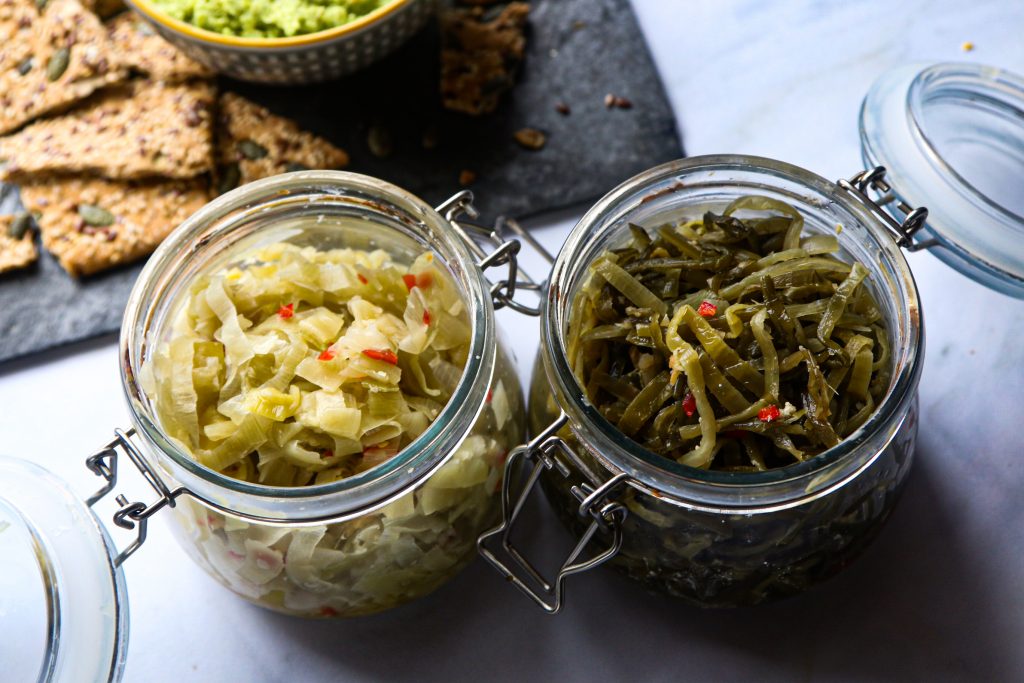Makes a 1 litre jar
Ingredients
1 leek stem, or the leaves of the leek – you can use either. You can also combine if you like, it’s up to you.
2 large cabbage leaves (to use on top of the leekchi to keep oxygen out when fermenting)
2 tbsp sea salt (not iodised table salt)
1 bunch spring onions (5-7), cut into 2.5cm (1 inch) pieces and halved lengthways
4 garlic cloves, peeled and crushed
1 tbsp finely grated fresh ginger
1-2 tsp dried chilli flakes, or half to a whole fresh chilli, chopped (depends on how hot you want your leekchi)
1 tbsp fish sauce (Nam Pla) – optional
Method
Shred the leek stem or leaves and place in a large bowl. We cut the leek following the natural lines, so that they are in long strips like pasta. But you can chop them finely if you like.
Sprinkle 1 tbsp salt all over the leek. This will help bring out the natural juices of the leek, which will form the ‘brine’, which the leek will then ferment in.
To bring out the juices even more, massage the salt into the leeks with either your hands, or bash them with a suitable pounder.
After 10-15 minutes of massaging, you should have quite a lot of juices (brine). Add the remaining ingredients and keep massaging.
Transfer to an airtight container, such as a kilner jar. Ensure you push down the ingredients under the brine, leaving an inch between the top of the leekchi and the top of the jar. It’s important to make sure that the ingredients remain submerged in the brine at all times, as otherwise it will become mouldy. If you need to, add a little filtered water to make sure that all the ingredients are submerged in the brine.
Place the 2 cabbage leaves (with the centre spine removed), on top of the leekchi and fold down into the jar. This is to help the ingredients remain submerged in the brine, and act as a barrier to avoid oxygen getting to the ingredients, which would encourage the growth of mould.
Seal the jar and keep at room temperature (on the counter or a shelf) for 3-4 days. The longer you keep it at room temperature, the more it will ferment. You will find that lactic acid gases will build up in the jar as the ingredients ferment – this is exactly what to expect. So you may want to check on the progress after day 2 or 3, by quickly opening the jar to release the gases. But quickly close it again, as you want to avoid oxygen getting to the ingredients, so they don’t go mouldy.
Once you are happy with the taste of your fermented leeks (after minimum 3 days), you can transfer them to the fridge. Once they are in the fridge, the fermentation process will stop. You can store them in the fridge and enjoy them for several months, just make sure you always use a clean utensil to remove any from the jar (no double dipping!), or you will encourage mould to grow.


